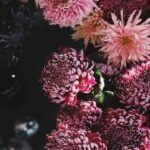Plant combination ideas for container gardens offer a creative and flexible approach to gardening in limited spaces. Whether you have a small balcony, patio, or rooftop, container gardening allows you to bring the beauty of plants into your environment. This article will explore the benefits of planting in containers, tips for choosing the right pots and planters, essential soil and fertilizer advice, as well as plant combinations for different light conditions and seasons.
Container gardening is an excellent option for those living in urban environments or with limited outdoor space. It offers the opportunity to create a beautiful garden without the need for a large yard or dedicated plot of land. Additionally, it provides flexibility in terms of arrangement and mobility, allowing you to move your garden around as needed.
Choosing the right containers is crucial for successful container gardening. From terracotta pots to hanging baskets, selecting the best vessels for your plants can impact their growth and overall health. Furthermore, understanding how to properly care for the soil and provide adequate fertilization is essential for maintaining a thriving container garden. This article will provide tips and insights into these important aspects of successful container gardening.
Benefits of Planting in Containers
Container gardening offers a multitude of benefits for those with limited outdoor space, especially in urban environments. One of the primary advantages is the ability to grow plants in small or non-existent outdoor areas. Whether you have a small balcony, rooftop, or even just a sunny windowsill, container gardening allows you to bring greenery and beauty into your environment. This can have a positive impact on mental health and overall well-being.
Additionally, container gardening provides flexibility in terms of plant placement and arrangement. You can easily move your containers around to find the best spot for sunlight or shade, and rearrange them for aesthetic purposes. This adaptability makes it easy to experiment with different plant combinations and create visually appealing arrangements that suit your personal style.
Furthermore, container gardening can also be a great way to grow edible plants such as herbs, vegetables, and fruits in urban settings where traditional gardening space may be scarce. This not only provides access to fresh produce but also promotes sustainability and self-sufficiency. With the right containers, soil, and plant selections, even apartment dwellers can enjoy homegrown ingredients for cooking.
| Benefit | Description |
|---|---|
| Space-saving | Allows growing plants in small or non-existent outdoor areas. |
| Flexibility | Allows easy movement of containers for better sunlight or arrangement purposes. |
| Edible Plants | Enables the growth of herbs, vegetables, and fruits in urban settings. |
Choosing the Right Containers
When it comes to choosing the right containers for your container garden, there are several factors to consider that will contribute to the overall health and success of your plants. Here are some tips for selecting the best pots and planters for your container garden:
Material
The material of your containers is important for a few reasons. First, you’ll want to consider the weight of the material as heavier options may be difficult to move around, especially if you’re gardening on a balcony or rooftop. Additionally, different materials can affect how quickly soil dries out, impacting how often you need to water your plants. Some popular materials for containers include clay, plastic, wood, and metal.
Size
The size of your containers is crucial for the health and growth of your plants. Make sure the containers are large enough to accommodate the mature size of each plant and have enough room for proper root development. It’s also important to consider the depth of your containers, especially if you’re planting vegetables or deep-rooted flowers.
Drainage
Good drainage is essential for container gardening success. Make sure your pots and planters have holes in the bottom to allow excess water to escape. Without proper drainage, plants can suffer from root rot and other issues caused by waterlogged soil.
By carefully considering these factors when choosing your containers, you can set yourself up for success when it comes to creating stunning plant combination ideas for container gardens. The right pots and planters will help provide a healthy environment for your plants to thrive and grow beautifully.
Essential Soil and Fertilizer Tips
When it comes to successful container gardening, the quality of soil and proper fertilization are crucial factors to consider. In this section, we will delve into essential soil and fertilizer tips that will help you create a thriving and healthy container garden.
Importance of Soil Quality
The type of soil you use in your containers plays a significant role in the overall health and growth of your plants. It is important to use a high-quality potting mix that is well-draining and provides good aeration for the roots. Look for a mix that is specifically formulated for container gardening, as it will contain the right blend of materials such as peat moss, vermiculite, and perlite to ensure optimal plant growth.
Fertilization Techniques
In container gardening, regular fertilization is necessary to provide plants with the essential nutrients they need to thrive. Consider using a slow-release granular fertilizer or a water-soluble fertilizer according to the specific needs of your plants. Be sure to follow the instructions on the fertilizer packaging and avoid over-fertilizing, as this can lead to nutrient imbalances and damage to your plants.
Organic Options
For those looking for organic options for their container garden, there are many natural fertilizers available that can help nourish your plants without harsh chemicals. Consider using compost, fish emulsion, or seaweed-based fertilizers to provide organic nutrients to your container plants. These natural options can contribute to healthy soil structure and microbial activity, promoting overall plant health.
By understanding the importance of soil quality and fertilization techniques, you can ensure that your container garden thrives with lush, healthy plants throughout the growing season. Whether you choose traditional potting mixes or opt for organic fertilization methods, providing your plants with the right foundation will set the stage for beautiful plant combination ideas for stunning container gardens.
Thriller, Filler, and Spiller Plant Combinations
When it comes to creating visually stunning container gardens, the thriller, filler, and spiller plant combination technique is a classic and foolproof design method. This approach involves selecting three types of plants – a thriller (tall focal point), fillers (medium-height plants that surround the thriller), and spillers (trailing or cascading plants that soften the edges of the container). By incorporating this combination of plants, you can achieve an eye-catching and dynamic container garden that is sure to impress.
One popular example of a thriller plant is the Dracaena marginata, also known as the dragon tree. With its tall and striking foliage, this plant makes for an excellent centerpiece in a container garden. Pair it with fillers like petunias or geraniums to add color and fullness to the arrangement. For spillers, consider species like trailing ivy or bacopa, which will elegantly spill over the edges of the container, adding texture and visual interest.
When selecting plants for your thriller, filler, and spiller combinations, it’s essential to consider their growth habits and light requirements. For instance, if your container garden will be placed in a sunny location, opt for plants that thrive in full sun.
Conversely, if your garden will be situated in a shaded area, choose shade-tolerant varieties for optimal growth. Paying attention to these details will ensure that all components of your plant combination thrive and create an overall harmonious look.
In addition to considering growth habits and light requirements, it’s crucial to choose plants with complementary colors and textures for your thriller, filler, and spiller combinations. By doing so, you can create a cohesive and visually appealing container garden that will be the envy of all who see it.
| Plant Type | Example |
|---|---|
| Thriller | Dracaena marginata (dragon tree) |
| Filler | Petunias or Geraniums |
| Spiller | Trailing Ivy or Bacopa |
Sun vs Shade
When it comes to creating a successful container garden, one of the most important factors to consider is the amount of sunlight the plants will receive. Whether your outdoor space gets full sun or is mostly shaded, there are plenty of plant combination ideas for container gardens that will thrive in these different light conditions.
For sunny locations, consider planting a combination of drought-tolerant and heat-loving plants that can handle the strong rays of the sun. Some great options for a sunny container garden include:
- Succulents such as hens and chicks, sedum, and echeveria
- Herbs like rosemary, thyme, and lavender
- Flowering plants such as petunias, marigolds, and geraniums
On the other hand, if your container garden is situated in a shady spot, there are still plenty of beautiful plant combinations that will thrive without direct sunlight. Some shade-loving plants to consider for your containers include:
- Hostas with their stunning foliage in various shades of green
- Ferns that add a touch of lushness to any shady corner
- Begonias with their vibrant blooms and attractive foliage
No matter what type of light conditions you have in your outdoor space, there are endless possibilities when it comes to creating stunning plant combinations for your container gardens. By carefully selecting the right mix of plants and considering their light requirements, you can create an eye-catching display that will thrive throughout the growing season.
Seasonal Plant Combinations
When it comes to creating stunning container gardens, one of the key aspects to consider is the seasonal plant combinations. Each season offers its own unique opportunities for showcasing beautiful blooms and foliage, and by carefully selecting the right plants, you can create a visually striking container garden that evolves throughout the year.
In spring, consider planting a combination of tulips, daffodils, and pansies for a burst of vibrant colors. These early bloomers will add a cheerful touch to your outdoor space and herald the arrival of the warmer months. As summer approaches, switch to heat-loving annuals such as petunias, geraniums, and marigolds. These plants thrive in the sun and will fill your containers with an abundance of blooms all season long.
Moving into fall, focus on incorporating ornamental grasses, mums, and flowering kale for a textural and colorful display. These cool-weather plants will add interest to your container garden as temperatures start to drop. Finally, as winter sets in, turn to evergreen shrubs such as holly, boxwood, and juniper to provide structure and greenery during the colder months. Consider complementing them with winter-blooming flowers like pansies or cyclamen for a pop of color.
By carefully planning your plant combinations for each season, you can ensure that your container gardens remain visually appealing year-round. Don’t be afraid to get creative and experiment with different plant varieties to discover what works best in your particular climate and growing conditions.
Remember that as seasons change so do plant needs – adjusting your containers accordingly will keep your creativity fresh from one season’s end through to another’s beginning.
Maintenance and Care
Container gardens offer a beautiful and versatile way to bring greenery and color into any space, whether it’s a small balcony, urban rooftop, or simply a corner of your patio. One of the key factors in ensuring the success of your container garden is proper maintenance and care. By following some simple tips, you can keep your plants healthy and thriving throughout the year.
First and foremost, regular watering is essential for container gardens. Due to their limited root space, plants in containers are more prone to drying out quickly, especially during hot weather. It’s important to check the moisture level of the soil regularly and water as needed. Using self-watering containers or adding mulch to the top of the soil can also help retain moisture and reduce the frequency of watering.
In addition to watering, maintaining the health of your container garden also requires regular feeding. Since container plants have limited access to nutrients in the soil, it’s important to fertilize them regularly during the growing season. Choose a high-quality liquid fertilizer and follow the instructions on the label for best results. You can also consider using slow-release fertilizer pellets when planting to provide a steady supply of nutrients over time.
To ensure that your container garden remains visually stunning as well as healthy, regular grooming is essential. This includes deadheading flowers, removing yellowing or diseased leaves, and trimming back any overgrown or leggy growth. Regular grooming not only keeps your plants looking their best but also helps promote better air circulation and reduces the risk of pests and diseases taking hold.
By following these maintenance and care tips, you can keep your container garden looking its best throughout the year. With proper watering, feeding, and grooming, you’ll be able to enjoy a flourishing display of plants that bring beauty and joy to your outdoor space. Be sure to experiment with different plant combination ideas for container gardens to create unique and stunning displays that reflect your personal style and creativity.
Conclusion
In conclusion, the beauty and versatility of container gardening offer endless opportunities for creativity and experimentation. Whether you have a small urban space or a sprawling backyard, the benefits of planting in containers are undeniable. From choosing the right pots and planters to understanding soil and fertilizer needs, creating visually stunning container gardens can be both rewarding and enjoyable.
As we’ve explored throughout this article, the classic thriller, filler, and spiller plant combinations provide a simple yet effective design technique for creating captivating container gardens. Additionally, considering the different light conditions and seasonal variations can further enhance the beauty and variety of your plants. From spring blooms to winter foliage, there are endless possibilities for creating striking plant combinations that will thrive year-round.
We encourage readers to take inspiration from this article and get creative with their own plant combination ideas for container gardens. Whether you’re a novice gardener or an experienced green thumb, there is always room for experimentation and exploration in the world of container gardening.
With proper maintenance and care, your stunning container garden will not only enhance your outdoor space but also bring joy and satisfaction as you watch it flourish. So go ahead, let your imagination run wild and create a beautiful, personalized oasis with your unique plant combination ideas.
Frequently Asked Questions
What Can Be Planted Together in a Container?
When planting together in a container, it’s important to consider the compatible needs of the plants. For example, pairing herbs with vegetables or flowers that have similar water and sunlight requirements can be a good strategy.
What Is the Best Container Planting Mix?
The best container planting mix is one that provides good drainage, moisture retention, and aeration for the plants’ roots. A lightweight mix with components like peat moss, perlite, and compost can create an ideal environment for growth.
How Do You Pair Plants With Pots?
Pairing plants with pots involves considering the size and shape of the pot in relation to the plant’s growth habit and root system. It’s also important to match the aesthetic qualities of the plant with the style and color of the pot for visually pleasing results.

Welcome to my gardening blog! I am passionate about plants and enjoy sharing my knowledge and experiences with others. In this blog, I will write about everything related to gardening, from tips on how to get started to updates on my own garden projects.





